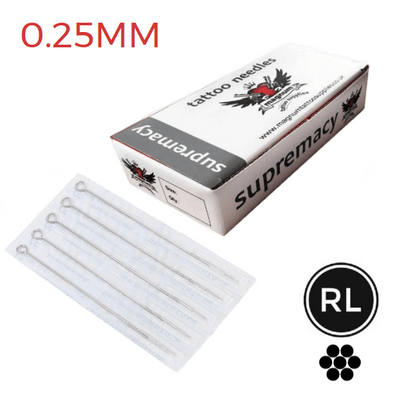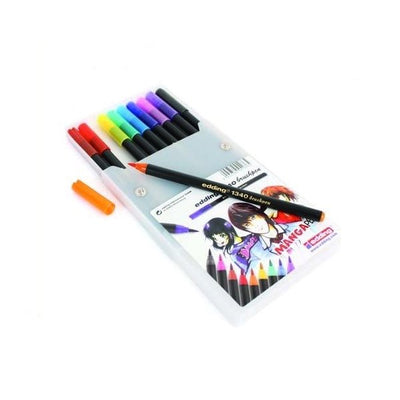Tattoos have adorned human skin for thousands of years, serving as symbols of cultural significance, personal milestones, or simply as forms of self-expression. But have you ever wondered why these intricate designs stand the test of time, permanently etched into the skin? The answer lies at the combination of art and science, a fascinating blend of human history and biological response.
As we delve into the permanence of tattoos, we uncover not only the craft and skill involved in tattooing but also the quality and variety of inks used. The choice of tattoo ink plays a pivotal role in the vibrancy, longevity, and safety of a tattoo. If you want to bring your tattoo designs to life with the best inks on the market, we invite you to explore our extensive range of tattoo ink products. Our ink collection offers the perfect blend of durability, variety, and safety for your art.

How are tattoo pigments permanent?
Tattoo pigments achieve their permanence by combining the ink's composition and the body's biological response. When a tattoo is applied, needles inject pigment deep into the dermis, the second layer of skin, which is stable and doesn't shed like the outer epidermis. This placement ensures that the tattoo remains visible despite natural skin regeneration. The pigments used in tattoos are made of particles too large for the body to easily remove.
Once in the dermis, these particles are engulfed by immune cells called macrophages (white blood cells), which aim to protect the body by capturing foreign substances. However, instead of clearing the pigment, the macrophages hold onto it, effectively anchoring the tattoo. Also, some ink particles are absorbed by skin cells called fibroblasts, which are cells responsible for maintaining connective tissue, further anchoring the tattoo in place.
Over time, even as some macrophages die and release the pigment, new macrophages capture it, maintaining the tattoo's visibility. This intricate interaction between the ink and the immune system, alongside the stability of the dermis layer and the size of the pigment particles, is what makes tattoos permanent.
For professional tattoo artists, ensuring the quality and safety of the ink used is paramount. Equally important is the choice of accessories that facilitate tattooing, such as Ink Pigment Cups. Suppose you are looking to enhance your tattooing setup with high-quality Ink Pigment Cups. Visit our website now to purchase our top-rated products. Make your choice today and ensure the best tools in the industry support your artistry.
Technological advancements in tattoo pigments
The durability and vibrancy of a tattoo are significantly influenced by the quality of the pigments used. Recent advancements in pigment technology have led to the creation of inks that are more resistant to fading caused by UV light and other environmental factors. These modern pigments are also less likely to break down into potentially harmful byproducts.
Moreover, the development of new pigments has expanded the colour palette available to tattoo artists, allowing for more detailed and colourful designs. Some of these pigments are designed to be more biocompatible to reduce the risk of allergic reactions and make tattoos safer for the skin.

What factors contribute to the longevity of a tattoo?
- Quality of ink: High-quality inks with stable pigment particles are less likely to fade or disperse unevenly in the skin. Advances in ink technology have produced pigments that are more vibrant and resistant to fading from UV exposure.
- Depth of ink placement: For a tattoo to be long-lasting, the ink must be deposited at the correct depth in the dermis. If the ink is placed too superficially, it may fade quickly due to skin regeneration. Conversely, if the ink is placed too deeply, it can lead to blurring.
- Skin location: Different parts of the body experience varying rates of skin regeneration and wear. Tattoos located in areas with high friction, exposure to sunlight, or that are frequently stretched (e.g., hands, feet, elbows) tend to fade faster than those in more protected areas.
- Sun exposure: UV rays can break down the pigment particles over time, causing the tattoo to fade. Regular use of sunscreen on tattooed areas can help preserve their appearance.
- Immune system response: Individual variations in immune system responses can affect how well a tattoo is maintained. Some people's bodies may be more efficient at breaking down and removing ink particles over time.
- Colour and design complexity: Lighter colours and more intricate designs may fade more quickly than darker, simpler tattoos. Black and dark blue inks are generally more durable and fade less than lighter colours like yellow, pink, or white.
- Lifestyle and skin care: Overall lifestyle choices, including nutrition, hydration, and skin care routines, can impact skin health and, consequently, the appearance of tattoos. Healthy skin tends to maintain tattoos better.
- Age of tattoo: As tattoos age, they can fade and lose definition. This is a gradual process influenced by all the above factors.
- Aftercare and healing process: Proper aftercare is crucial for the longevity of a tattoo. This includes keeping the tattoo clean, moisturised, and protected from the sun, especially during the initial healing period. Poor healing can lead to fading, infection, or scarring, affecting the tattoo's appearance.
If you want to give your tattoo the best care possible, shop our tattoo aftercare products now and ensure your tattoo remains as stunning as the day you got it.

Are tattoos completely permanent?
Tattoos are generally considered permanent because the ink is injected into the dermis, a deeper layer of skin where the tattoo pigment particles are too large for the body to naturally eliminate. However, tattoos can change over time. Factors such as sun exposure, the body's immune response, and the natural ageing process can lead to fading and distortion of the design.
Additionally, tattoos can be professionally removed through methods like laser treatment, which breaks down the ink particles into smaller ones that the body can remove. While this process can significantly reduce the appearance of a tattoo, complete removal can be difficult, and the success of removal treatments can vary based on the tattoo's age, colours, and the individual's skin type.
Thus, while tattoos are designed to be permanent, their appearance can change and be partially or substantially removed with professional intervention.
Does tattoo ink go into the bloodstream? How long does it affect the blood?
The process of tattooing can introduce small amounts of ink and other substances into the blood through the needle punctures.
The amount of ink that enters the bloodstream during tattooing is typically very small and is gradually removed by the body's immune system. The particles that enter the bloodstream are usually too large to remain there for an extended period, are processed by the liver and kidneys, and then excreted from the body.
The impact of tattoo inks on the blood is generally minimal and temporary. There is no evidence to suggest that the presence of these ink particles in the bloodstream has long-term health effects.



























































 Studio supplies
Studio supplies












 Power & batteries
Power & batteries








 Aftercare
Aftercare





















 Apprentice
Apprentice


 Piercing & jewellery
Piercing & jewellery







 PMU supplies
PMU supplies




 New arrivals
New arrivals
 Gift vouchers
Gift vouchers
 Shop all
Shop all















































